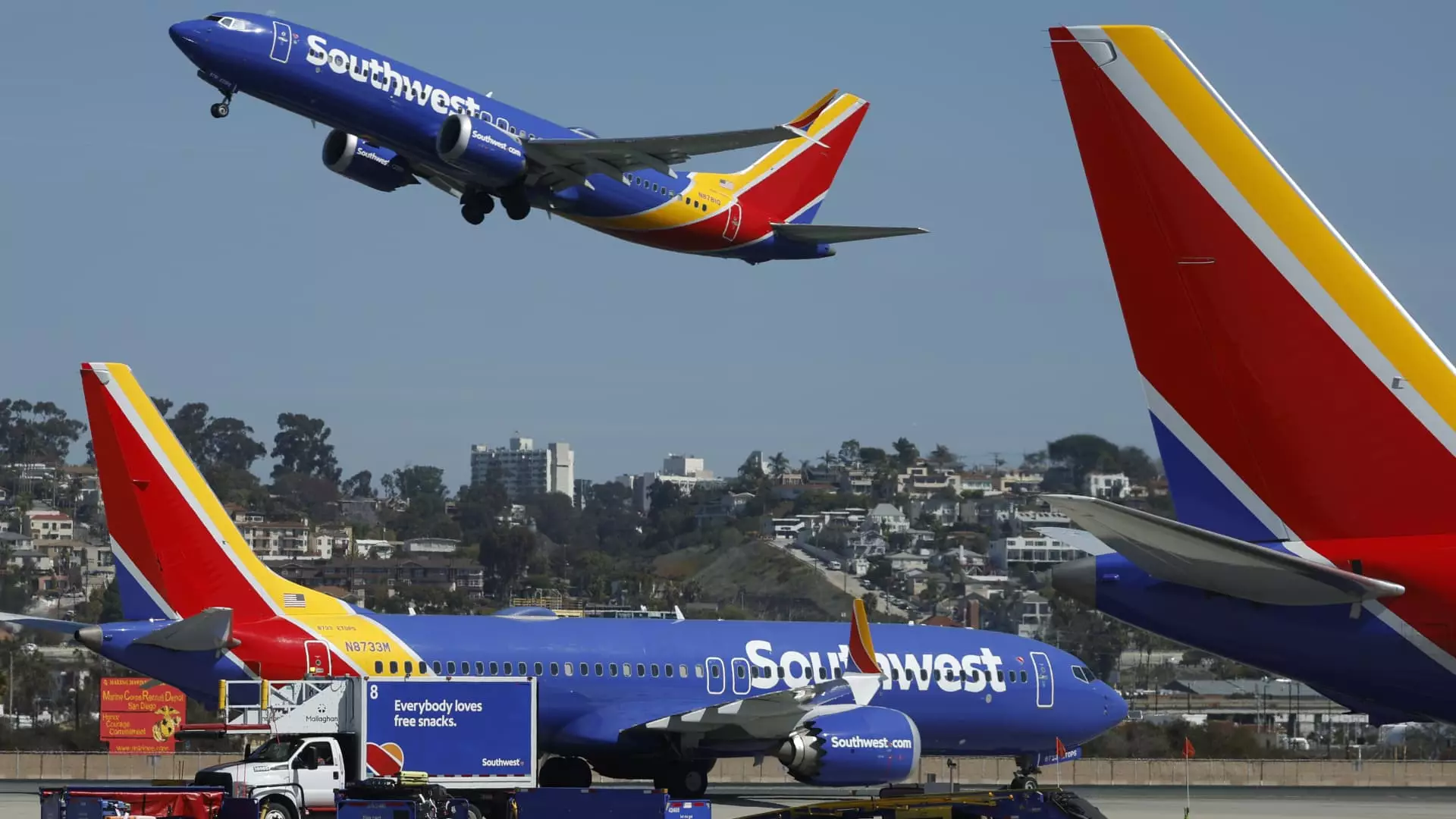In a world where consumer preferences are evolving with unprecedented speed, Southwest Airlines finds itself at a crossroads. CEO Bob Jordan’s recent remarks indicate that the airline is seriously contemplating a drastic transformation—one that includes the introduction of airport lounges and premium seating options, alongside exploring long-haul international flights. The notion is simple yet powerful: adapt or perish. For years, Southwest was synonymous with low-cost fares and no-frills flying, but today’s landscape of aviation prompts a reevaluation of what customers genuinely want.
The airline industry has seen a seismic shift in passenger behavior. Travelers are no longer just seeking economical flights; many are willing to pay a premium for enhanced comfort, convenience, and unique experiences. This phenomenon is directly impacting airlines like Southwest that have historically prided themselves on simplicity and affordability. When Jordan implies that “whatever customers need in 2025, 2030” could potentially be on the table, it signals a newfound willingness to innovate based on customer demand, including features long favored by legacy carriers like United and American Airlines.
Challenging the Status Quo
However, this transformation comes at a cost—both monetarily and culturally. The elimination of open seating and the introduction of basic economy tickets signal not just a shift in business strategy, but also an internal conflict about what the brand represents. Historically, open seating and two free checked bags set Southwest apart from its rivals. Deserting these unique selling points for the sake of short-term revenue gains risks alienating the loyal customer base that has propelled its success for over half a century.
Jordan acknowledges that existing policies sent customers flying to competitors who offer amenities that Southwest lacks, but one has to wonder if the decision to adopt features like premium cabins and airport lounges truly aligns with the ethos of ‘The Southwest Way.’ Should the airline’s identity be reevaluated against the backdrop of evolving market conditions, or should it find a way to stay true to its roots while evolving?
The Competitive Landscape and Pressure to Deliver
Southwest’s current predicament is not just about nourishing customer desires; it’s also about surviving intense competitive pressure. The rise of low-cost carriers and the proliferation of basic economy models have significantly changed the dynamics of air travel. Coupled with the looming threat of activist investors pushing for more revenue, Southwest is precariously balancing its mission of being the “low fare airline” with the necessity of modernizing its service offerings.
The assertion that travelers are currently benefiting from “heavily on sale” summer fares speaks volumes about not just Southwest, but the market as a whole. If every airline is slashing prices, how does one distinguish themselves? The emphasis on premium offerings could become a double-edged sword—while it attracts high-spending customers, it risks diluting the core of what made Southwest appealing to budget-conscious travelers in the first place.
The Future: An Uncertain Horizon
Interestingly, Jordan’s cautious acknowledgment that it’s “way too soon” to outline specifics of the premium offerings despite rampant competition is telling. It presents a lingering question: How can Southwest possibly compete with the likes of Delta and American if it remains static or slow to adapt? Nashville International Airport, highlighted as an example of an enthusiastic customer base desiring premium options, may just be the tip of the iceberg. The risk is that as consumers grow accustomed to the idea of luxury, they may not settle for less in other regions that Southwest serves.
To consider long-haul international flights is both a daring ambition and a risky endeavor. The possible transition from the omnipresent Boeing 737 to long-range aircraft is uncharted territory for the airline. While partnerships with Icelandair and China Airlines indicate a willingness to broaden its horizons, one wonders whether these moves will stack up against the operational and logistical challenges of expanding into international markets.
The Road Ahead: A Balancing Act
At the end of the day, Southwest Airlines faces a pivotal moment in its storied history. The pressures to evolve have never been greater, yet the challenge lies in how to embrace innovation while remaining familiar to its core customers. The airline has a responsibility to navigate these waters delicately, ensuring that in its quest to attract high-spending clients, it does not alienate the loyal base that made it an American staple. The future of Southwest hinges not just on adding premium features, but on preserving the spirit of accessibility and affordability that initially captivated millions.

